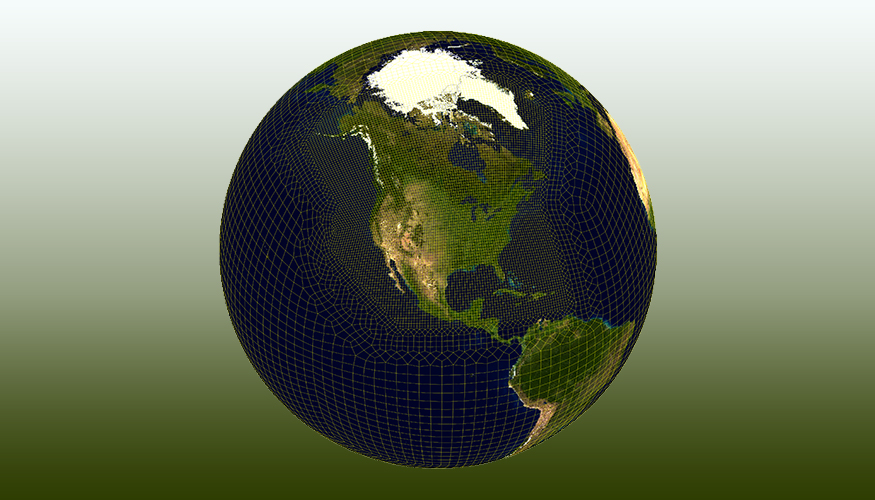
A model of the North American Regionally Refined Model grid showing the grid refinement that includes a 100-kilometer grid globally and 25 kilometers over North America. DOE’s Earth system model has been improved to create more realistic simulations of different ecosystem factors that are influenced by environmental changes. (Credit: Lawrence Livermore National Laboratory)
This year alone Texas froze over and the Sierra Nevada forests that help sequester carbon dioxide from the atmosphere burned on and on from the Caldor Fire – two sure signs of the need to better predict extreme events caused by climate change, and the effect these events have on ecosystem services, such as carbon sequestration by plants and soils.
Doing so requires realistic, high-resolution simulations of environmental changes taking place across oceans, land, and ice generated by Earth system models running on the most powerful, advanced computers. The Department of Energy relies on a new, faster version of the Energy Exascale Earth System Model (E3SM) to help anticipate changes 10, 20, or 50 years from now in factors like regional air and water temperatures that can strain energy grids, and extreme events like wildfires and flooding that could shut down infrastructure.
Berkeley Lab scientists have contributed to improving the land component of the latest release of this model – dubbed E3SM2 – which can now generate more precise simulations twice as fast as before. Berkeley Lab scientist William Riley said the improved representations of processes and interactions taking place across Earth’s land component can help scientists better predict extreme events, and disentangle the many complex factors driving ecosystem dynamics, such as changes in vegetation or carbon cycling.
“The improved land model, new with E3SM2, allows us to depict various factors in finer detail, such as how trees and plants will respond to stressors like drought and wildfire, or whether soils – which have been shown to lose carbon as temperatures rise – will become warmer over time,” said Riley.
If, for example, a plant community were to change from one dominated by large, old-growth trees that sequester a lot of carbon dioxide to one full of shorter shrubs that do not, that would have a big impact on the cycling of carbon between land and air.
“Our group is also pioneering the use of machine-learning approaches for wildfire and methane emissions projections and interpretation of the complex interactions underlying Earth’s surface energy and carbon dynamics, for example soil carbon dynamics,” Riley said.